► Hyundai Nexo FCEV driven
► Early drive in South Korea
► Should the Mirai be worried?
Hyundai’s NEXO SUV is the natural successor to its first foray into a hydrogen fuel cell production car – the ix35 Fuel Cell. They both share a similar idea – that a mid-sized family car can run on a powertrain that only produces pure water as a waste emission.
With the NEXO, Hyundai even claims that it ‘cleans the air around it’. In fact, in November 2018, a NEXO drove around London on the dirtiest driving route (mapped out via data from a pollution study by King’s College London), hoovering up 918.75kg of air and filtering out pollutants via its filters.
Despite the recent explosion in electric (and electrified) cars, there is still an interest from brands in hydrogen fuel cell ones, too. Hyundai and Audi recently announced a ‘cross-licencing agreement’ to share intel into hydrogen FCEV tech, with Kia and the wider VW Group also gaining access.
Anyway, we’ve driven the NEXO SUV in the UK – read on for our drive…
Are hydrogen fuel-cell cars the future?
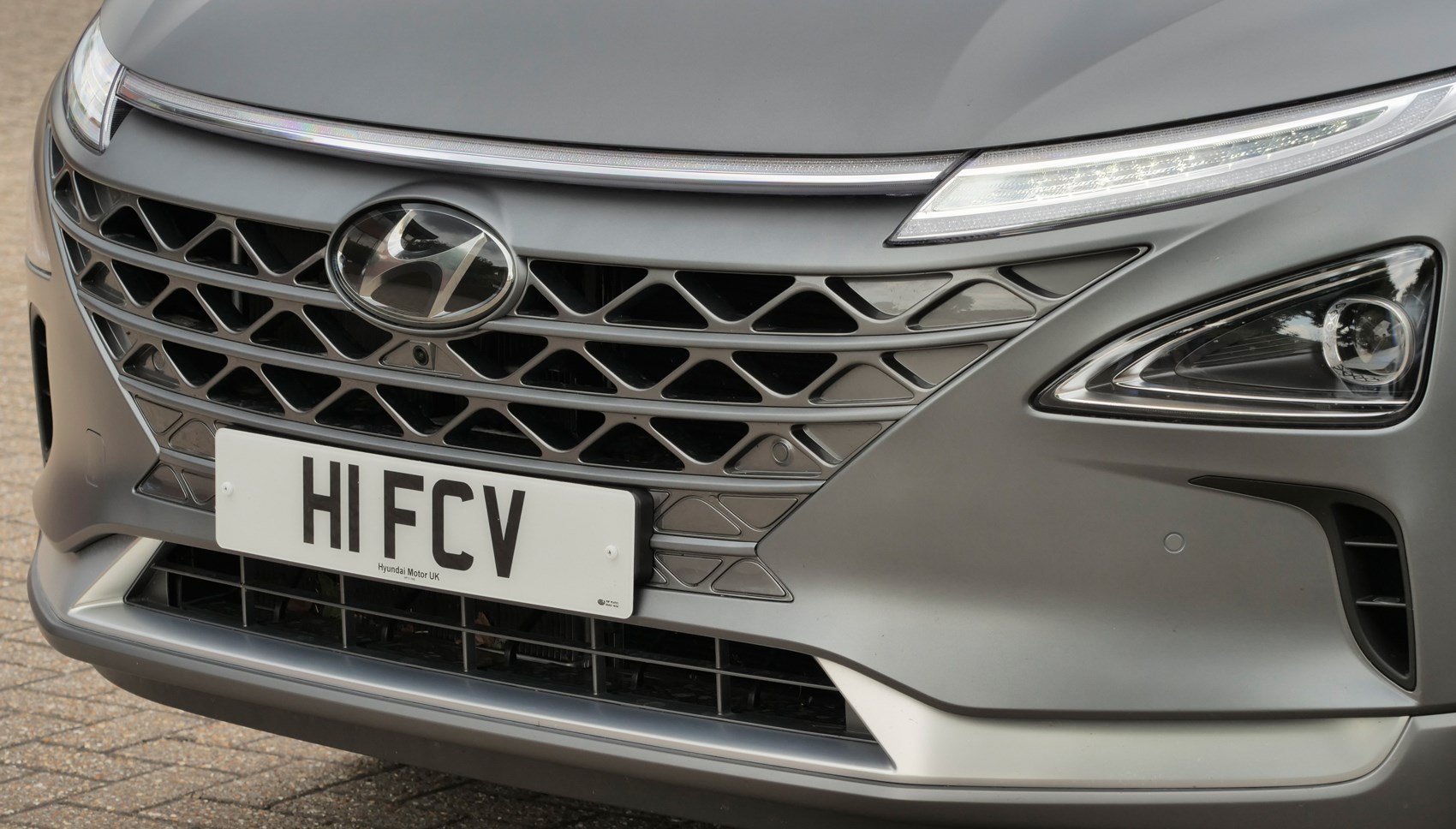
Lemme guess, slow and wallowy?
Well, the 161bhp and 291lb ft available is plenty enough – launching the NEXO’s heady 1873kg kerbweight to 62mph in 9.5 seconds. We’d argue it felt capable of a quicker launch than that, as we were able to keep up with a hard-charging Jaguar F-Type after sprinting from a set of traffic lights.
On the road it’s impeccably quiet on most road surfaces with quite a cushy ride, even on those glitzy (and large 19-inch) wheels. Wind noise isn’t hugely noticeable even at motorway cruising speeds, either. In fact, aerodynamic efficiency was something Hyundai worked hard on when working on the NEXO; its drag co-efficient is 0.329 – down from 0.35 on the ix35 Fuel Cell. You can also help your available driving range by utilising the wheel-mounted paddles, which lower or increase the harsheness of the brake regeneration forces.
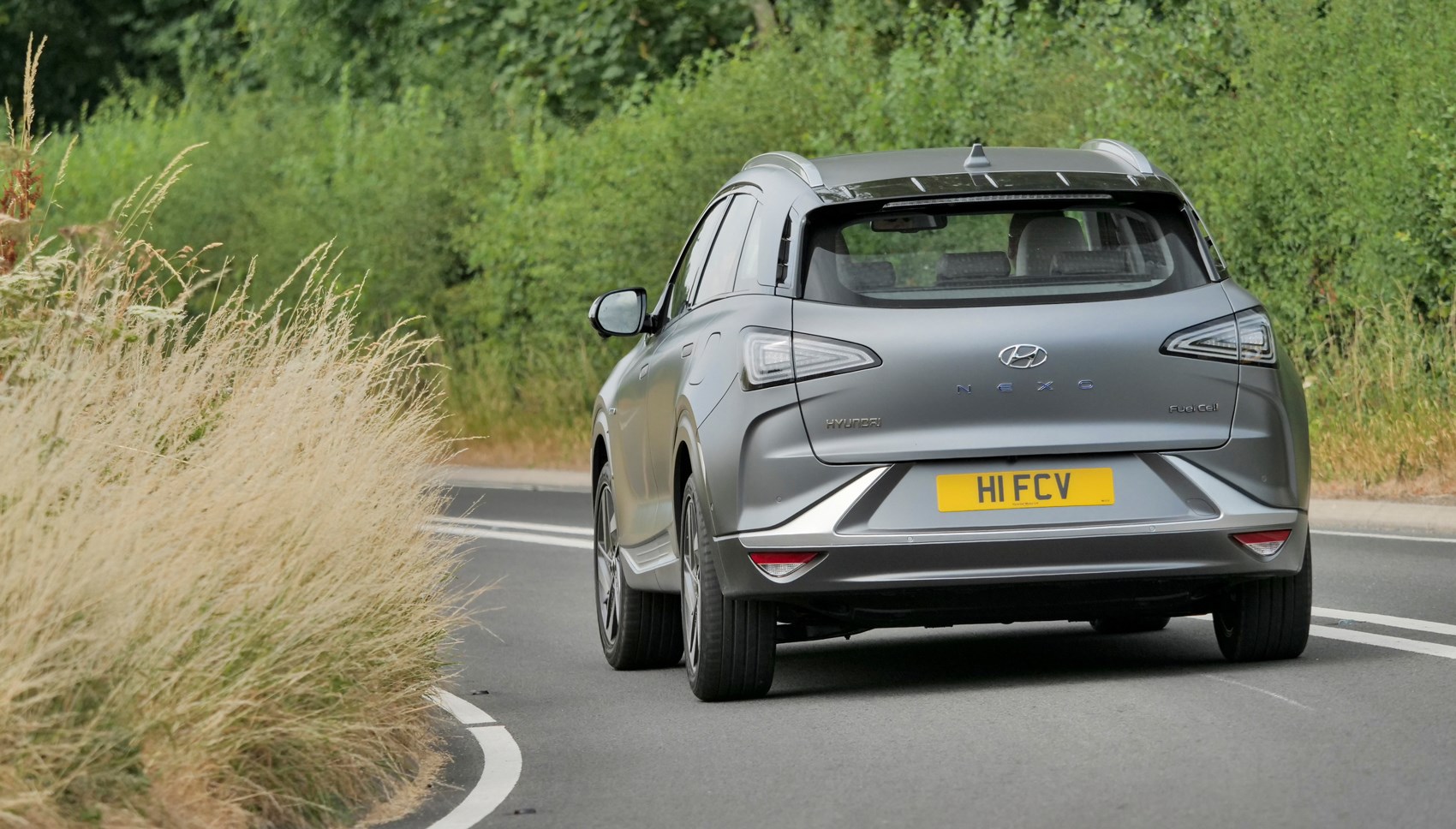
Get a bit feisty with your driving style and the NEXO will try hard to fight back – it’s a little reluctant to respond to aggression. The steering itself is numb and gets a little twitchy at high speeds, and body roll is, er… considerable; the NEXO feels heavy through the bends. Or, at the very least, it can’t entirely keep its own heft entirely in check – not that anyone will be hustling this hydrogen crossover around a track. All in all it’s an inoffensive, quiet and comfy car to drive in most situations.
Tell me about that interior
It’s arguably quite a departure from the Hyundai norms in here, with only the Kona Electric coming close in terms of design and material use. The standout features are the huge infotainment screen and accompanying instrument panel and that high-rise centre console. The latter is strewn with buttons to the point of confusion when first getting behind the wheel, but it hides a neat cubby underneath.
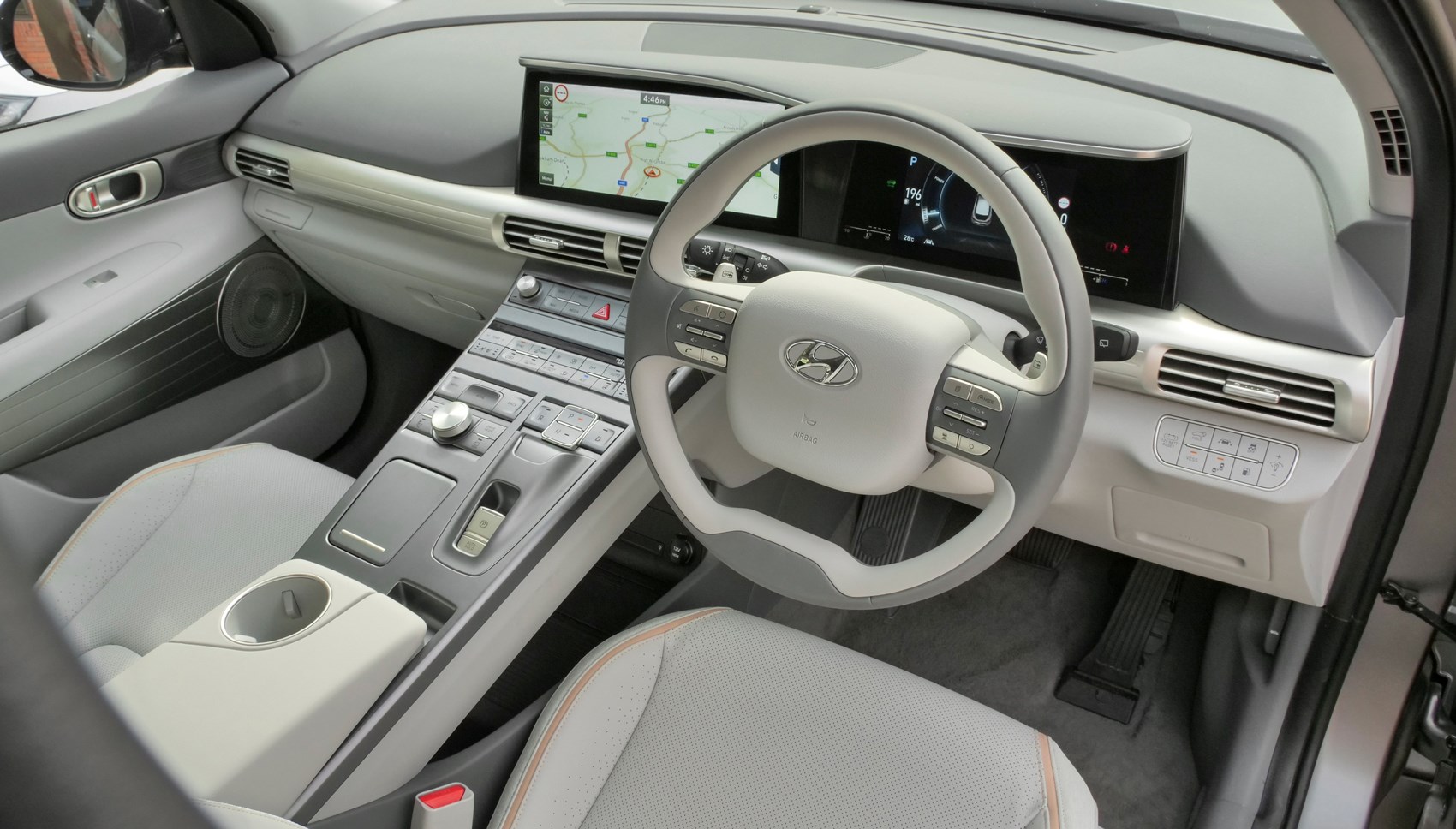
The central touchscreen still uses a very familiar UI experienced by those who already own many modern Hyundais and Kias but has a huge suite of hydrogen-bespoke graphics and intel. You can navigate it via touch, prodding certain buttons or using the iDrive-like dial. The car also plots out hydrogen fuel stations and intelligently maps out your range on the map via roads, not as the crow flies, to provide you with a better sense of how far you can go with the hydrogen available on board.
Material quality is impressive – something that Hyundai has already excelled in in recent years – and the use of lighter colours certainly appeals. The list of safety tech is, frankly, baffling but means Hyundai can claim up to Level 4 autonomous ability in some markets. One of the NEXO’s unique tricks is the Blind-spot View Monitor, which uses cameras to display live images of what’s in your C-pillar blind spots via the instrument display when you flick an indicator. Simple, effective and hardly distracting.
What’s the hydrogen fuelling situation like?
Quite a distance behind the charging infrastructure of electric and hybrid cars, in all honesty. At the time of writing, there are 16 operational fuel stations and six more in the works. The ones already operational are mainly centralised around London and the M4 corridor. There are also ones near Birmingham, Sheffield, two in Aberdeen and one on the Orkney mainland.
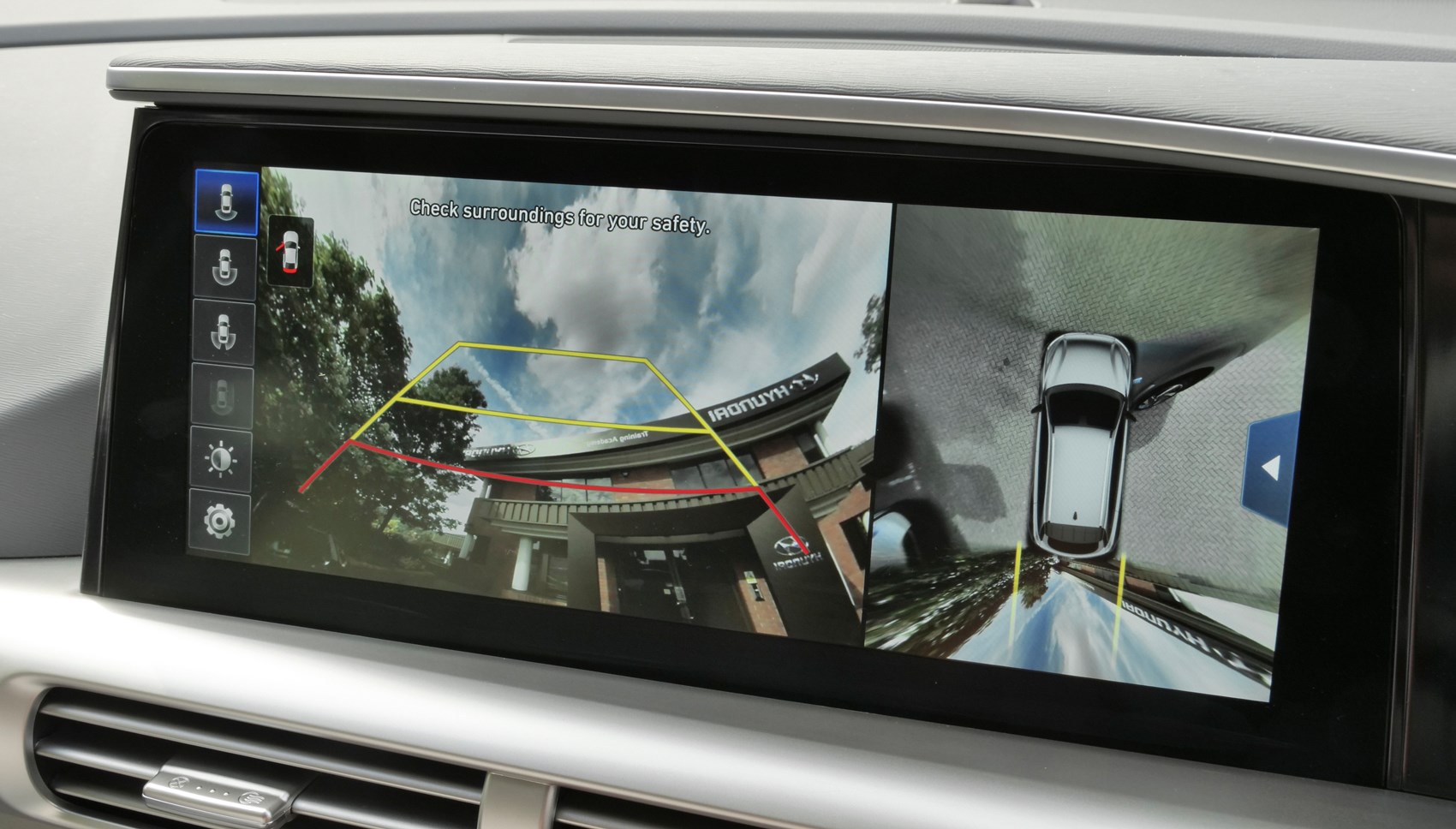
That isn’t a lot, but the NEXO’s (admittedly claimed under WLTP) range of 414 miles means you could theoretically drive from the station near Edgware to Swansea, Liverpool, Leeds or Torquay on one ‘tank’, as it were (the NEXO technically has three hydrogen tanks). Plus, unlike charging an electric or electrified car, fuelling a hydrogen car only takes around five minutes – not really any longer than an ICE car. Regardless, it not exactly like many will have the ability to nip around the corner and fuel up.
What’s it like as a practical SUV?
Roomy for four, definitely. The light colours of the interior and standard panoramic glass roof help brighten up, and there’s plenty of legroom and headroom despite that roof. A fifth adult might be a bit cosy.
As for the boot, there’s quite a high load lip (to be expected, given the three hydrogen 700bar tanks are placed under the rear seats and above the rear axle) but 471 litres of volume is respectable.
Hyundai NEXO: UK verdict
The NEXO, then, is quite rolly in the bends, not as practical as almost all of its crossover SUV rivals and is fuelled by something that, while incredibly innovative, will be a tad awkward for most people. Still, this FCEV is supremely comfy, super quiet and has an interior that’s a step above for Hyundai’s usual (already very decent) standards.
But the main benefit is that it’s surely about as guilt-free motoring as you can get these days, with a car supposedly so good for the earth it hydrates and cleans the air in it. It’s expensive, but if there’s a genuine feasibility to living with it, there may be those that will take the significant price hit on the chin.
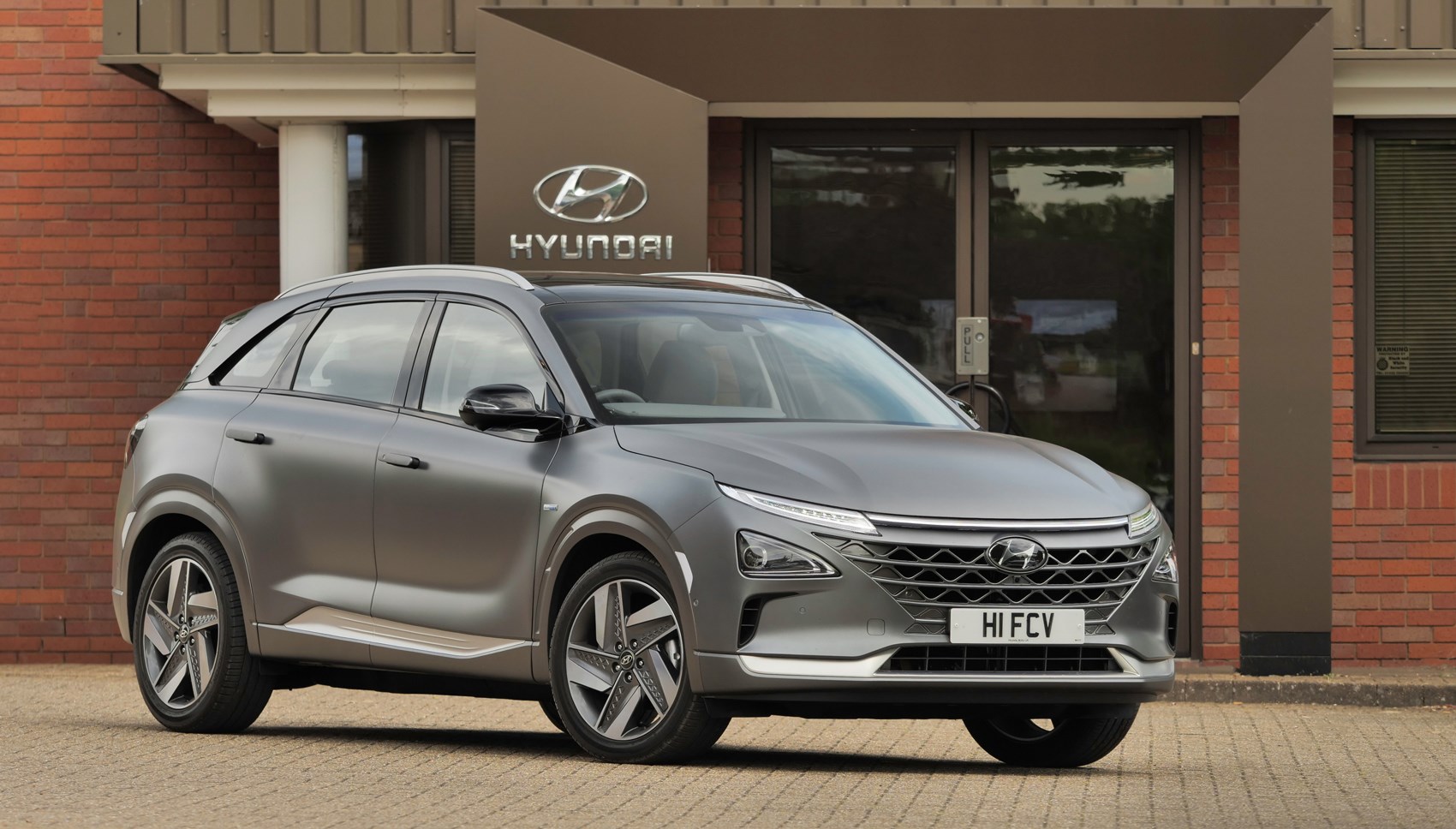
Check out our Hyundai reviews
Hyundai NEXO: first impressions in Korea
By Gareth Evans
This early drive in the Nexo isn’t the first time we’ve experienced a hydrogen Hyundai SUV. The Korean firm has been selling an ix35 equipped with an electrolysis-based battery-electric drivetrain since 2015, billing it the first mass-produced fuel cell vehicle on mainstream sale. It cost £53,105 and thus was a bit of a difficult one to sell.
However, the new car isn’t simply an ix35 with the traditional combustion motor whipped out and the boot space severely hindered by tanks of H2. This is a bespoke model Hyundai expects to sell in the thousands – just as soon as the fill-up infrastructure is there.
And that might not be as far off as you think, with several areas and nations stating bold ambitions to build hundreds of hydrogen recharge facilities in the coming years, including Germany, Japan and of course California.
The current UK crop isn’t worth mentioning yet, but there’s an appetite – subsidised by funding from groups of multinational industrial bodies such as carmakers and fuel firms – to rapidly increase the introduction of these units.
Given 700 BAR of pressure, a Nexo will fill its trio of 52-litre tanks in 5min from empty. Which sort of makes ‘conventional’ EVs a bit lacklustre in that regard.
The best hybrid cars on sale
Hydrogen? Are you driving the future?
To be honest, hydrogen electric probably is the power source of the future. It makes a great case for itself in the Nexo, with zero tailpipe emissions (though we’re not quite there with well-to-wheel sustainable energy part yet…), a theoretical maximum range of 370 miles between trips to those admittedly hen’s-teeth hydrogen filling stations, and the facility to scrub particulates from the air as you drive.
That’s right. The Nexo actually cleans the ambient environment around the car, removing dust and other minute airborne pollution along the way. It emits just clean air. But then so did the ix35… just nowhere near as efficiently. And Hyundai has crammed this latest fuel cell arrangement into roughly the same size and weight as a larger internal combustion engine, so it’s scaleable too…
Whether or not this car in particular is the future is another question entirely. Its design puts clear air between it and other Hyundai models, but without being quite as ‘look-at-me-I’m-going-green’ as the Mirai.
How to appeal to the masses? Build a crossover!
The very fact this is an SUV lends it a family friendly ubiquity that’s bound to appeal to more people than that distinctively different Toyota.
Yet its aerodynamically sympathetic lines still look modern and futuristic, immediately placing the Nexo head and shoulders above the ix35 – and all other Hyundais to date, frankly – in the desirability stakes.
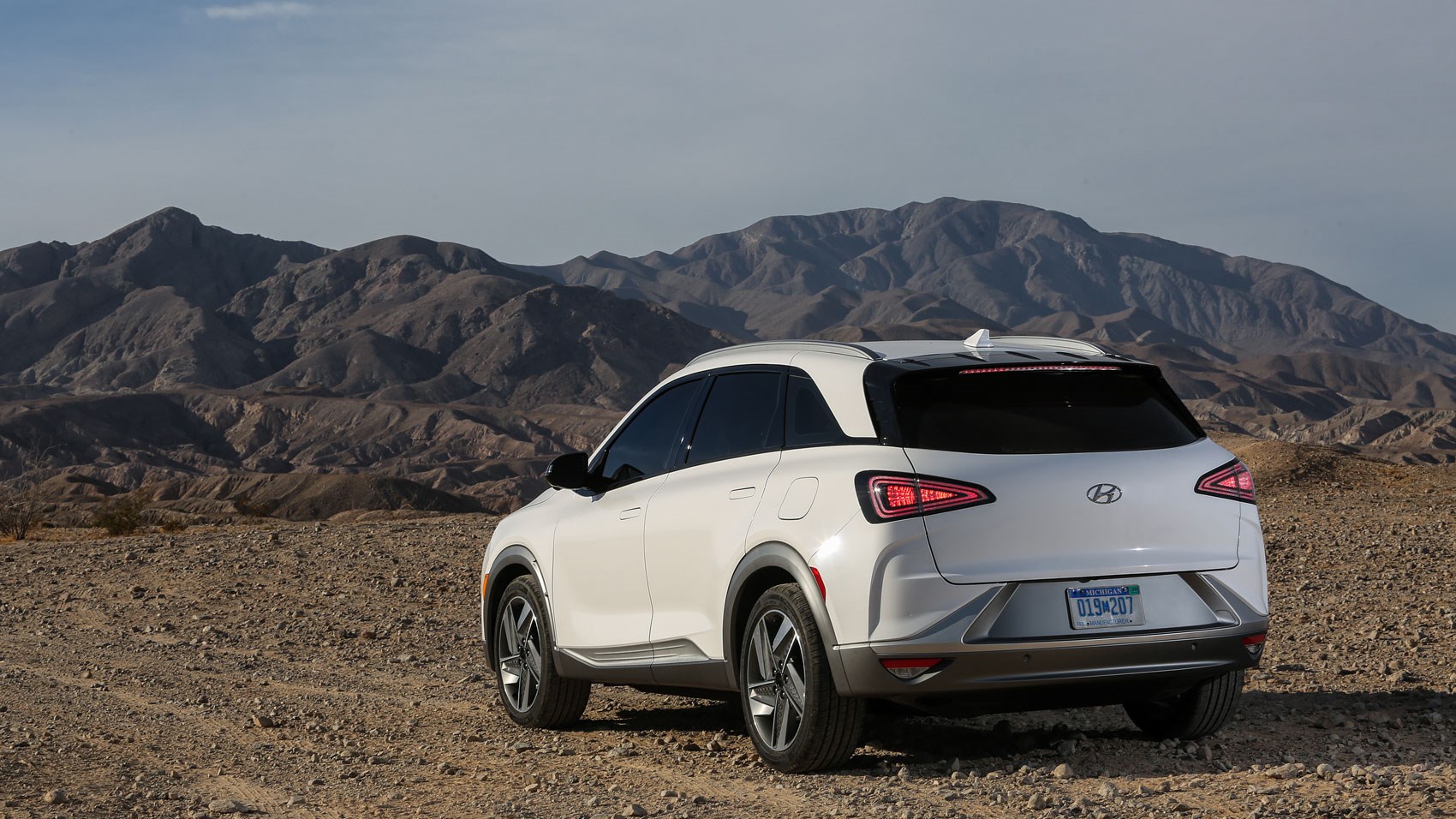
Inside it’s a similar matter, with a new 12.3-inch screen taking pride of place in the dash and a digital instrument cluster to display all your driving parameters. There’s even a blindspot system that automatically shows the output of a rear-view camera (located in each door mirror) displaying the lane you’re intending on moving into when you indicate. We wish all Hyundai’s cars were this interesting. Despite the fact that it can be difficult to work out exactly where cars are around you on first evaluation.
There’s liberal use of sustainable materials in there – sugar cane, bamboo – but you wouldn’t immediately know it. Instead it’s a bit of a mish-mash of soft-touch and harder, more brittle surfaces that don’t necessarily look like they belong together.
And if you’re a fan of the Swedish minimalism you’ll find in a Volvo these days, the Nexo’s buttonfest cabin may seem a little jarring upon first inspection. Take a moment to think about it though, and we reckon you’ll appreciate actual touchpoints rather than relying on an all-too-often recalcitrant touchscreen to do the same jobs. There’s a refreshing simplicity to it considering what’s under the bonnet and in the boot. They would look better finished in another colour, though…
Sure, that’s splitting hairs, but then with all this kit and the new-age drivetrain, we’d be surprised if the Nexo waded onto the market at a cost much below the Mirai, so interior finishing is important. There’s no indication on pricing at this point – only the indication from Hyundai’s Head of Eco Cars that he hopes it’s more expensive than the ix35 – but this is an undeniable leap forwards for Hyundai’s design both inside and out regardless.
Tell me more: how does the Hyundai Nexo drive?
The best way to describe it is user-friendly. Setting off is a question of pushing the brake pedal and selecting the D button. There’s no gearlever to speak of, so you also get R to go backwards, P to stay still and N to freeroll.
It’s an eerily quiet experience at low speeds, but any evaluation faster than 40mph or so was hindered by the poor road surfaces and frustratingly vocal navigation and warning systems – both issues that in our experience don’t make it over from Korea to European highways.
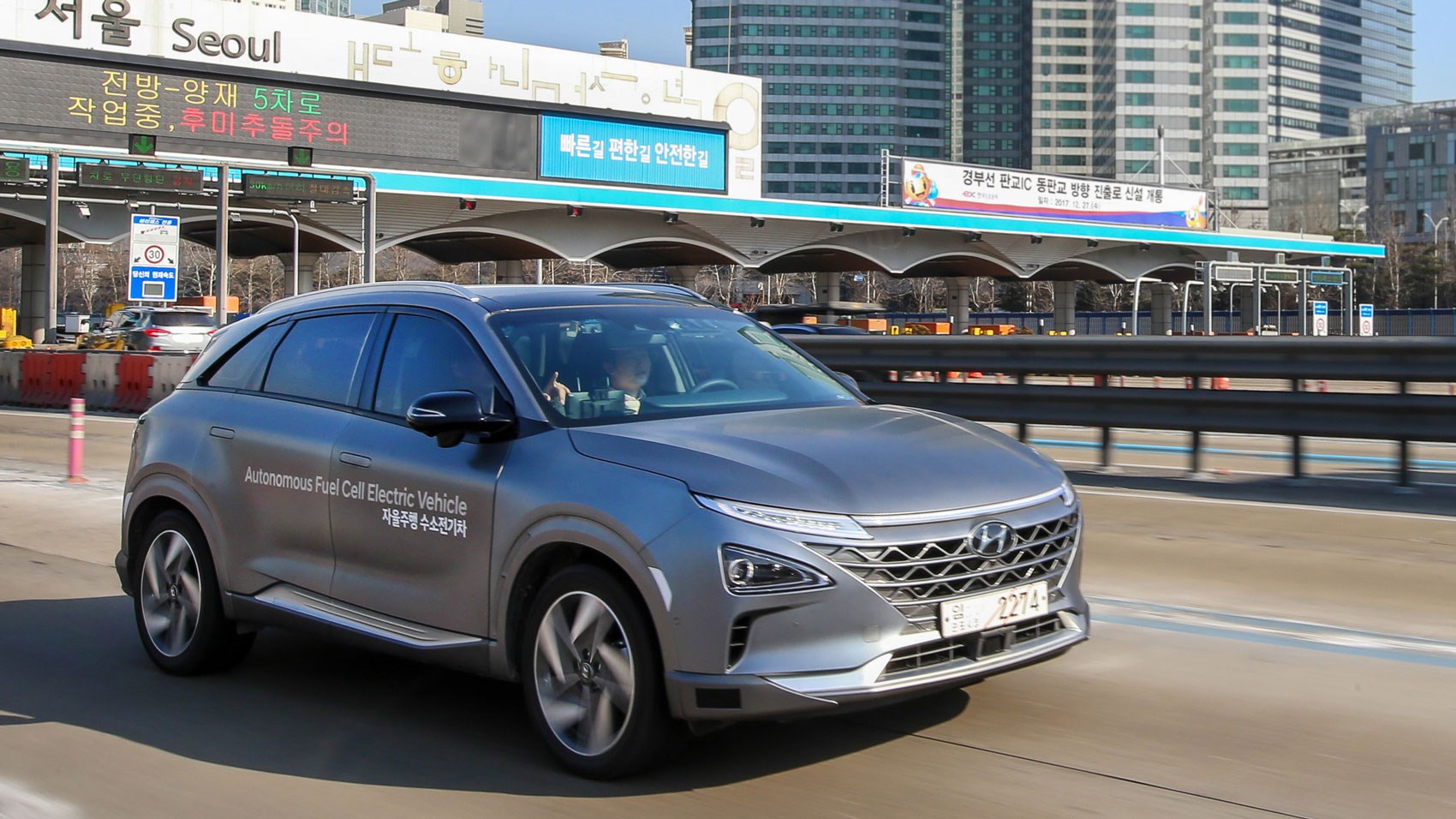
The handling isn’t much to write home about, with the soft suspension feeling like it has almost infinite travel and steering with less communication than a shy Trappist monk with a sore throat.
But it rides well enough on the motorway, and some of the driver-assistance tech puts it right at the top of the class. The Nexo, as we found out, will drive itself very convincingly indeed on quiet multilane roads, with the active lane-keep (available at up to 93mph) and adaptive cruise feeling incredibly well-honed. It’s configured to work with the driver, rather than fighting against you the whole time as we’ve experienced in some rivals’ right-hand drive cars.
We must couch that with the fact we’ve only done a hundred miles or so, and on Korea’s road network with the steering wheel on the other side of the car. Tuning for the left is yet to be tested.
So it’s an SUV, but will my family fit?
Actually it isn’t half bad. The boot’s shallower than it could be to accommodate the trio of carbonfibre H2 tanks, but its 471 litres of capacity is usefully larger than most hatchbacks.
Four adults will fit easily, but five would be too cosy for us.
We found the front seats remarkably comfortable, though. They’re large, electrically adjustable leather items with heating and cooling, and feel far more expensive than we were expecting.
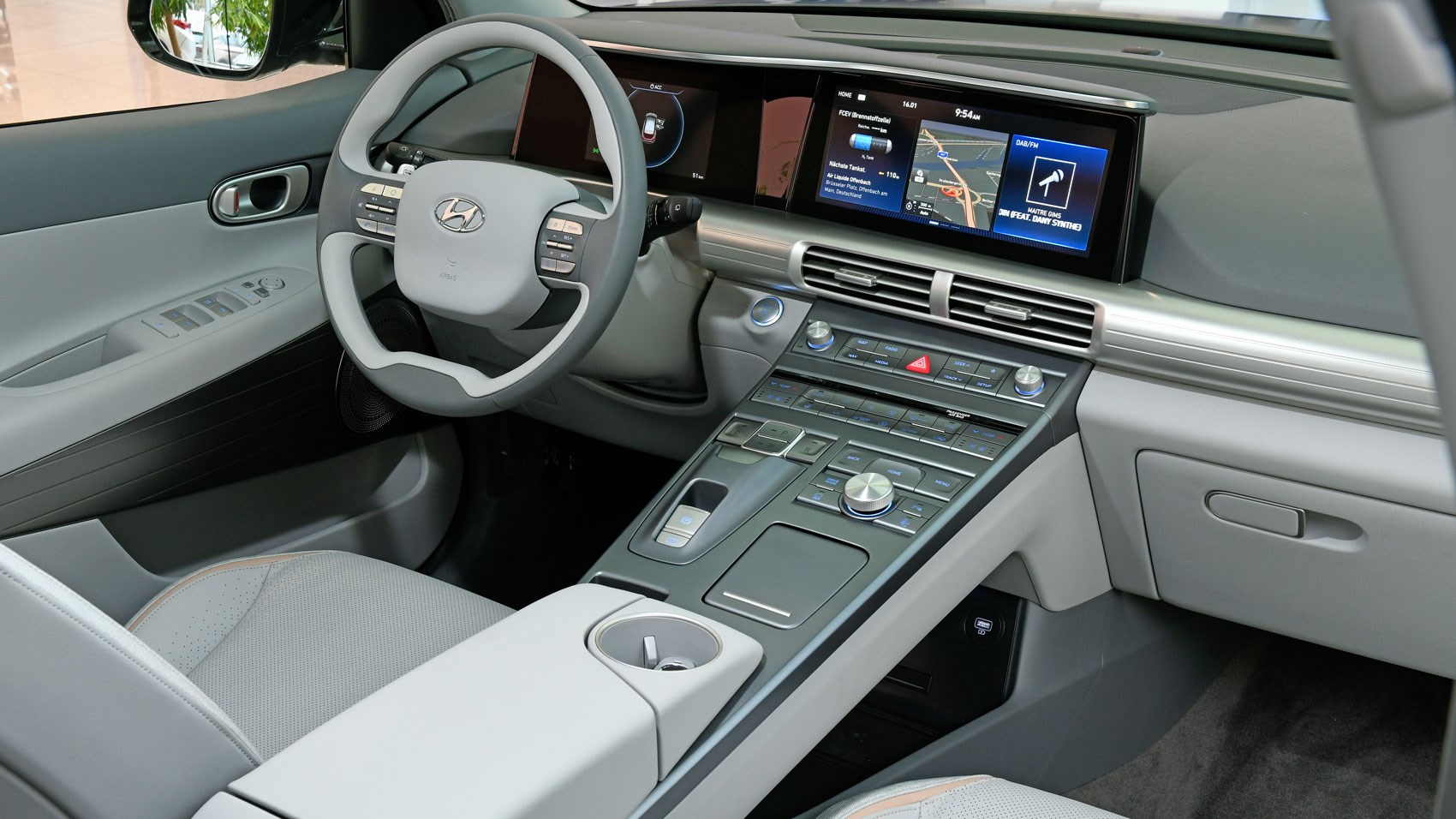
One final note here regards the conventional sunroof opening, which seems incongruously small in a world of full-length panoramic glass ceilings. A minor point, but remember we’re very likely talking properly postured pricing here.
First impressions
The Nexo’s a credible effort from Hyundai at a mainstream hydrogen car, but its main drawback is bound to be cost. The firm’s spokespeople wouldn’t be drawn on where it’ll sit in the market, but it’s fair to expect it’ll cost as much, if not more, than the £66k Mirai. It is more practical and an SUV, after all – a bodystyle the whole family can get behind.
What that would make this is an eye-wateringly expensive Hyundai, but then it’s no secret this is a company keen to pile on the premium. With a vehicle as unusual, practical and in some use cases as cheap to run, it could help pave the way for mainstream fuel cell cars quicker than we think.
We get the feeling Toyota may need to strike back…